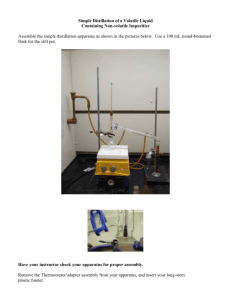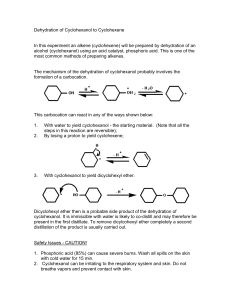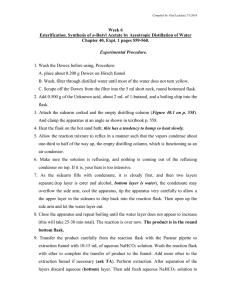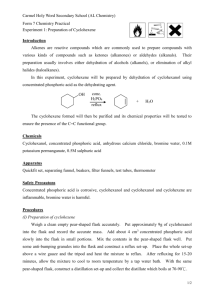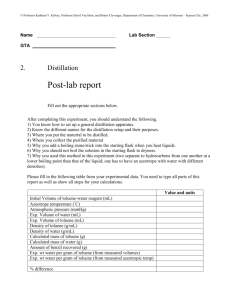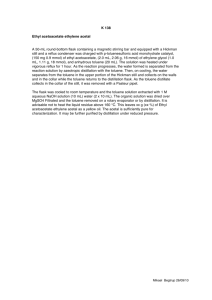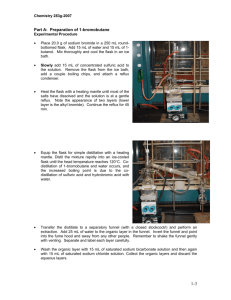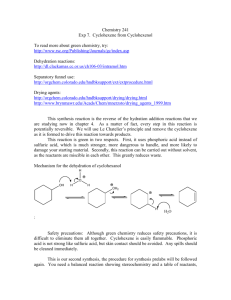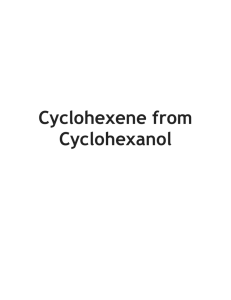CHAPTER 19-ALKENES FROM ALCOHOLS
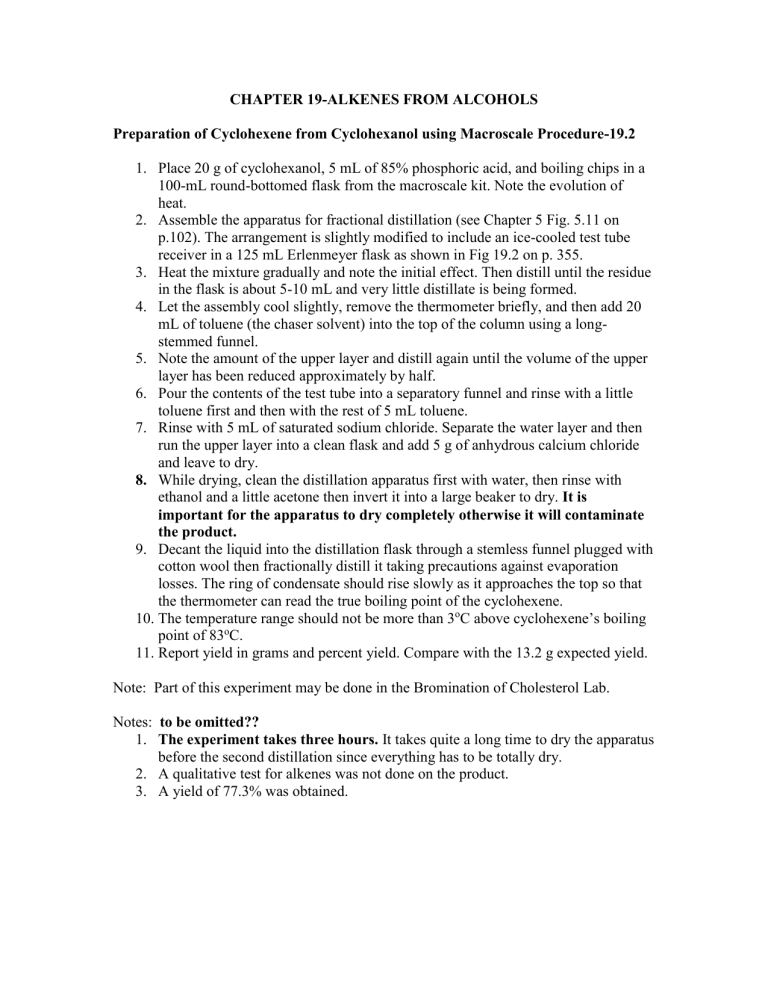
CHAPTER 19-ALKENES FROM ALCOHOLS
Preparation of Cyclohexene from Cyclohexanol using Macroscale Procedure-19.2
1.
Place 20 g of cyclohexanol, 5 mL of 85% phosphoric acid, and boiling chips in a
100-mL round-bottomed flask from the macroscale kit. Note the evolution of heat.
2.
Assemble the apparatus for fractional distillation (see Chapter 5 Fig. 5.11 on p.102). The arrangement is slightly modified to include an ice-cooled test tube receiver in a 125 mL Erlenmeyer flask as shown in Fig 19.2 on p. 355.
3.
Heat the mixture gradually and note the initial effect. Then distill until the residue in the flask is about 5-10 mL and very little distillate is being formed.
4.
Let the assembly cool slightly, remove the thermometer briefly, and then add 20 mL of toluene (the chaser solvent) into the top of the column using a longstemmed funnel.
5.
Note the amount of the upper layer and distill again until the volume of the upper layer has been reduced approximately by half.
6.
Pour the contents of the test tube into a separatory funnel and rinse with a little toluene first and then with the rest of 5 mL toluene.
7.
Rinse with 5 mL of saturated sodium chloride. Separate the water layer and then run the upper layer into a clean flask and add 5 g of anhydrous calcium chloride and leave to dry.
8.
While drying, clean the distillation apparatus first with water, then rinse with ethanol and a little acetone then invert it into a large beaker to dry. It is important for the apparatus to dry completely otherwise it will contaminate the product.
9.
Decant the liquid into the distillation flask through a stemless funnel plugged with cotton wool then fractionally distill it taking precautions against evaporation losses. The ring of condensate should rise slowly as it approaches the top so that the thermometer can read the true boiling point of the cyclohexene.
10.
The temperature range should not be more than 3 o C above cyclohexene’s boiling point of 83 o
C.
11.
Report yield in grams and percent yield. Compare with the 13.2 g expected yield.
Note: Part of this experiment may be done in the Bromination of Cholesterol Lab.
Notes: to be omitted??
1.
The experiment takes three hours.
It takes quite a long time to dry the apparatus before the second distillation since everything has to be totally dry.
2.
A qualitative test for alkenes was not done on the product.
3.
A yield of 77.3% was obtained.

